All About Acrylic Showcases
Why Choose Acrylic?
When choosing an exhibit case, the material of the vitrine plays a crucial role. Many domestically made archival-quality exhibit cases use acrylic instead of glass. Regardless of the type of acrylic chosen, rest assured that your objects will be well protected, offering visitors a top-notch experience.
In comparison to glass, acrylic offers:
- Enhanced strength and higher impact resistance
- Lightweight properties for easier handling and reduced shipping expenses
- Shatter-resistant qualities
- Cost-effective fabrication processes that equal a less expensive exhibit case
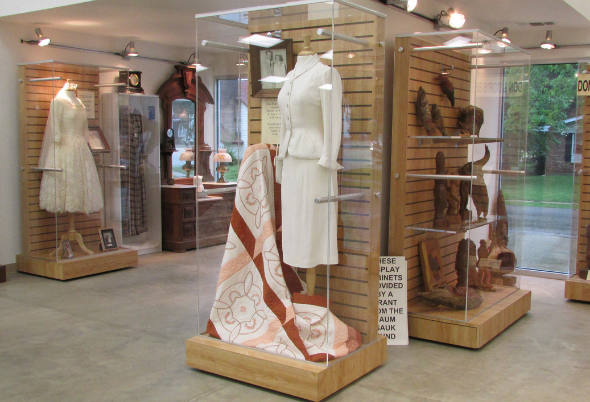
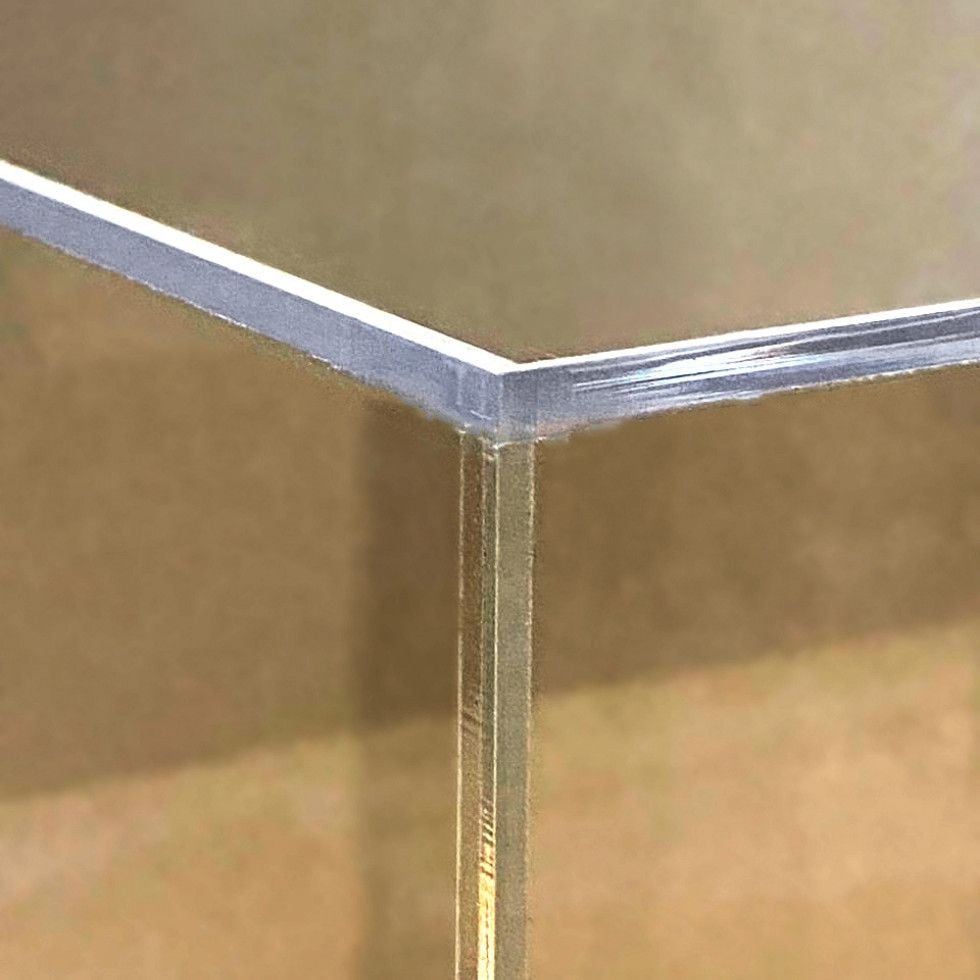
Good Quality Vitrine
Extruded Acrylic with Solvent Seams
GA® Case Lines: Avant (standard cases), Crystal Cubes, Gem, Hudson, Jewell, Keynote, League, Prestige, Rollie Mobile, Splendor
THE BASICS
What is extruded acrylic?
- Extruded acrylic, or continuous feed acrylic, is made when heated liquid polymer is fed or extruded through a series of rollers.
What are solvent seams?
- A solvent is applied to the edges of the acrylic to be joined, and then the two pieces are held together until the solvent evaporates.
- A solvent seam will strengthen and transparently seal the vitrine joints, but it will not fill any air gaps between the acrylic pieces, which can cause bubbles. A professional shop should be able to minimize bubbles.
THE BENEFITS
- Extruded acrylic is standard in a variety of applications, so it costs less
- Standard and UV-filtering options available
- Perfect for small to medium museum exhibit cases
- Ideal for short-term use - pop-up exhibits, rotating shows and smaller collections
OTHER CONSIDERATIONS
A short-term lifespan is typically around two years. It's the most economical choice for short-term use, but lifespan is an important consideration. You may want to factor in the replacement cost in longer-term scenarios.
Better Quality Vitrine
Cast Acrylic with PS-30 or UV-bonded seams
GA® Case Lines: Avant with Museum Vitrines, Delphi, Metro, Sapphire
The Basics
What is cast acrylic?
- Cast acrylic is formed by pouring heated liquid polymer into a mold that creates a sheet.
- It has higher clarity, more consistent thickness, and less bowing or bending.
What are PS-30 seams?
- PS-30 acrylic adhesive is a two-component cement. It is mixed and then applied to the edges of the acrylic to be joined and then left to cure.
- The adhesive will fill any air gaps in the seam, resulting in clear, transparent, bubble-free joints
What are UV-bonded seams?
- Adhesive is applied to the edges of the acrylic to be joined, then cured using concentrated UV light.
- The adhesive fills in air gaps, resulting in clear, transparent, bubble-free joints
The Benefits
- A more time and labor-intensive process, PS-30 and UV-bonded seams combined with extensive hand finishing and polishing create clear, bubble-free joints
- Available in standard and UV-filtering
- Fabricated for long-term use and reuse
- Can be made into larger vitrines than extruded acrylic
- Excellent for rotating, traveling and permanent, long-term exhibits
- Life span can be 10-25+ years (with proper care and handling)
Other Considerations
Cast acrylic vitrines are typically twice the cost of a comparable-size vitrine made from extruded acrylic. It is important to consider the use and intended lifespan.
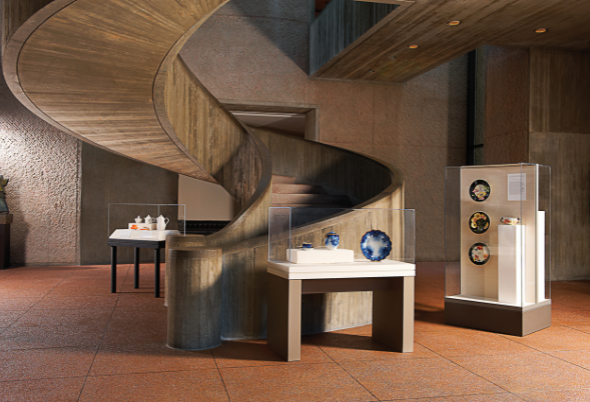

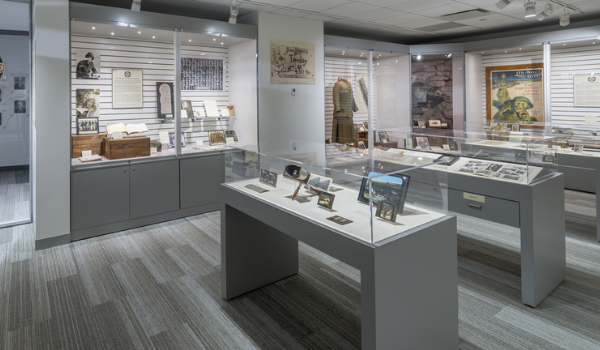
Best Vitrines
State-of-the-Art Acrylic Protection
- When choosing vitrine material for valuable or vulnerable objects, these specialized acrylic types afford additional protection.
- These unique materials require proprietary or unique construction techniques, creating flawless edges.
- High-performance acrylic vitrines made with these materials extend the life of the vitrine and are excellent for rotating, traveling, and permanent exhibitions.
- Life span can be 10-25+ years with proper care and handling
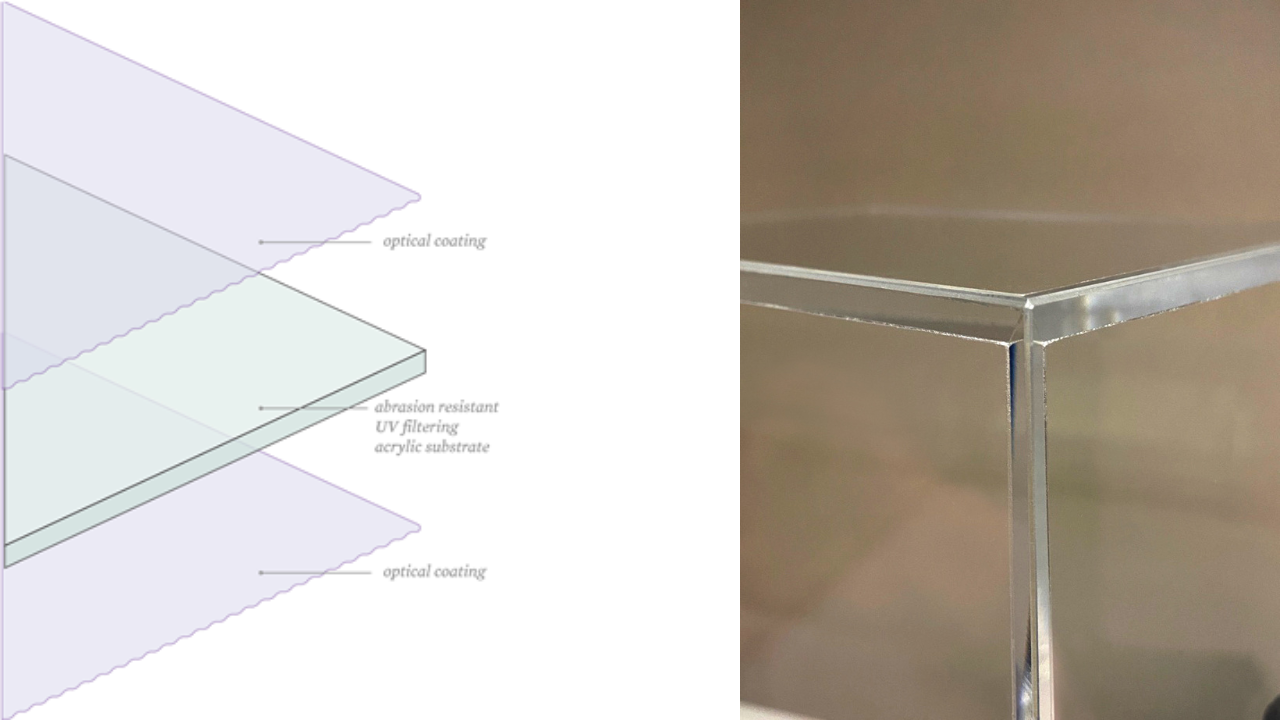
Optium Museum Acrylic®
Crafted from durable, scratch-resistant, UV-filtering extruded acrylic, this top-quality acrylic will meet your needs.Conservators appreciate Optium for its protective and antistatic features. Exhibitors find joy in its antireflective properties and lightweight design, which makes handling easier. Everyone values its abrasion resistance, which prolongs the life of the vitrine.
- ANTIREFLECTIVE properties allow for optimal viewing with a crystal-clear view for visitors
- Designed to be ANTISTATIC, Optium won’t attract dust, allowing the surface to remain cleaner for longer, and is excellent for use with friable media
- ABRASION RESISTANCE protects from minor scratches caused by visitors, traveling or frequent cleaning
- UV PROTECTION filters out 99% of damaging UV rays
